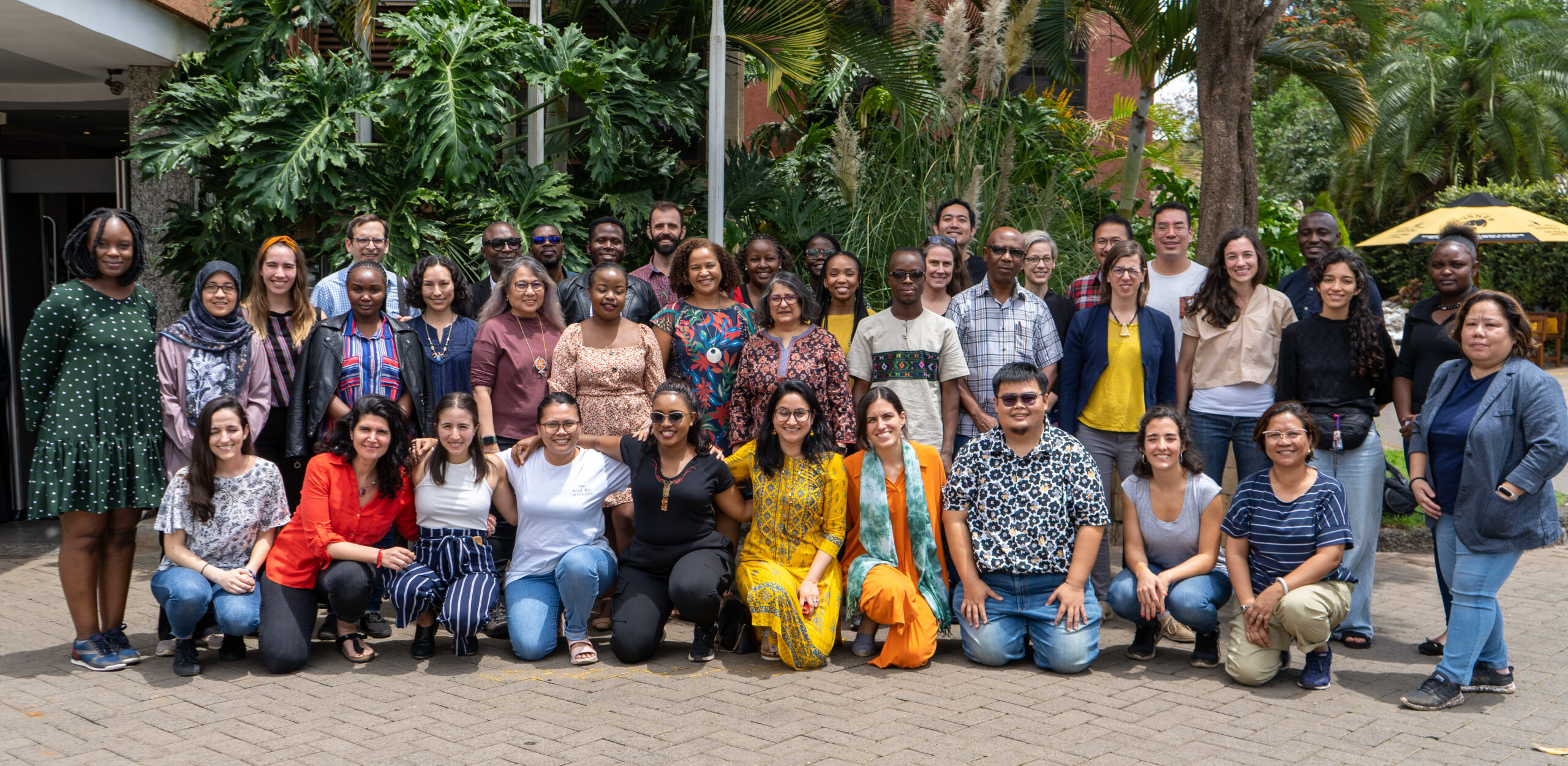News & Blogs
Learning Arc: Community Participation

Group photo taken during the global convening of the Learning Agenda. Nairobi, Kenya. March, 2023.
Within our global movement for grassroots justice, practitioners face some common challenges. The Learning Agenda aims to surface these challenges, and bring practitioners together to identify the best strategies to address them. What guides our actions is the conviction that to deepen our impact we first need to understand ‘what works’ in different contexts. We believe that sharing this existing knowledge between each other is key to create new strategies, and improving existing ones.
In our quest to promote a global movement for justice– where communities are empowered to shape the decisions that affect them, promoting participation of justice seekers and communities in decision-making processes is key. Having the ability to discuss and participate as equals in the decisions that affect us is at the core of our conceptualisation of justice. There is no social justice without community participation. However, how do we promote spaces and governance structures that allow for open, active and free participation? This remains an open question. Exploring possible answers to this question is the main objective of the Community Participation Learning Arc.
Why the Community Participation Learning Arc?
With this learning arc we aim to draw out comparative insights from research and practice to try to understand which strategies have worked in building community power, expanding the participation of justice seekers and communities, and driving broader systemic changes, in different contexts. We have two specific goals:
- For all of us in this cohort of action research projects to be able to dig in and learn more from each other about how to increase community participation in decision-making, what’s working and what isn’t;
- Together, to create a body of knowledge on this topic that will help us answer the broader question facing our movement: how can community participation lead to systems change?
What’s involved in the Learning Arc?
We will explore this theme through a podcast series, with each project in the learning arc interviewing another project. As we are all increasingly busy, with tons of articles to read and write, we propose discussing this theme through more informal and creative means. We also believe that there is a special magic in practitioner-to-practitioner connections, and want to capture the richness of this peer exchange.
Each of you will be interviewed by a cohort project, and will in turn, interview another project. The broad set of questions we will cover in this arc are presented below, and draw on the discussions at the Nairobi convening of the learning agenda cohort in March 2023. But each interview/episode will be different, and participants can decide to lean into specific areas or questions that they are most interested in. We will work with you to define the guiding questions for each interview and facilitate the interview process.
The podcasts will be recorded, lightly edited and published on the learning agenda webpage. They will be accessible to the rest of the cohort and other members of the Grassroots Justice Network who are grappling with similar issues related to community participation in decision-making.
What are the questions we will explore?
There are two areas that we will try to explore through the podcast series:
a). Promoting participation within the community
Inclusion: How do we increase the participation of women and marginalised groups in decision-making spaces? How do we get beyond usual suspects, and bring in the voices of marginalised communities?
- Which specific strategies have we already tried, and what worked?
- What practical challenges are we facing in efforts to increase the participation of marginalised groups, and how are we navigating them?
- What risks do we encounter when trying to engage marginalised groups? What strategies can we use to to anticipate and mitigate those risks.
Power dynamics: How do we navigate power dynamics and vested interests within communities?
Costs and benefits of participation: There are risks to participation, particularly in repressive contexts and in conditions of closing civic space. At the same time, communities need to see the concrete benefits of participation. Change processes can be long and uncertain, and democratic backsliding is lowering the incentives for participation, and increasing risks. How do we navigate this tension?
b). Claiming and reclaiming spaces to engage with the state
Participation as an opportunity: How do we encourage public officials to see participation as a positive rather than a threat? Are there concrete examples that can demonstrate that participation makes public policy more efficient? What were the strategies used to accomplish that?
Design choices for participation spaces: When we are advocating to open new spaces for participation or make existing spaces more effective, what are the specific policy design considerations to keep in mind i.e. what should those spaces look like in practice?
Preventing co-optation: How do we prevent or address possible co-optation of participation spaces by state interests? How do we ensure that participation is not superfluous or tokenistic? Can we generate alternative spaces for community participation (what we call, “claimed spaces”)?
Participation→ Policies: How to go from participation to wielding power to impact policies and effect change? What do we need to make that happen?
While this set of questions constitutes our starting point, we invite you all to explore different areas and lean into aspects you find most relevant. We are also open to suggestions. Please let us know what you think by filling out this quick form.
Stay tuned to hear more!
SHARE THIS:
